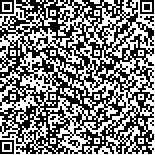| Quote
: |
祁芳,张泓,易细芹,邓石峰,周予婧,许明.电针阳陵泉等下合穴对急性胆囊炎豚鼠组织高迁移率族蛋白B1的影响[J].湖南中医药大学学报英文版,2018,38(11):1248-1252.[Click to copy
] |
|
| |
|
|
| This paper
:Browser 4180times Download 2243times |
| 电针阳陵泉等下合穴对急性胆囊炎豚鼠组织高迁移率族蛋白B1的影响 |
| 祁芳,张泓,易细芹,邓石峰,周予婧,许明 |
| (湖南中医药大学针灸推拿学院, 湖南 长沙 410208) |
| 摘要: |
| 目的 观察电针急性胆囊炎(AC)模型豚鼠阳陵泉、足三里、上巨虚、下巨虚后对胆囊组织中高迁移率族蛋白B1(HMGB1)、白介素-1β(IL-1β)及核因子-κB信使核糖核酸(NF-κB mRNA)表达的影响,探究胆囊下合穴——阳陵泉是否在治疗对应腑病方面存在相对特异性。方法 72只健康豚鼠随机分为正常组、模型组、阳陵泉组、足三里组、上巨虚组、下巨虚组共6组,每组12只,雌雄各半。除正常组外,其余豚鼠均手术于胆囊内注射大肠杆菌建立急性胆囊炎豚鼠模型,造模成功并治疗5 d后,取胆囊组织,免疫组化方法检测胆囊高迁移率族蛋白B1(HMGB1)及白介素-1β(IL-1β)的水平,RT-PCR检测NF-κB mRNA的表达。结果 (1)与模型组比:各穴位组NF-κB mRNA表达均较低(P<0.01),阳陵泉组HMGB1、IL-1β含量均较低(P<0.01);(2)与阳陵泉组比:其他各穴位组HMGB1、IL-1β含量及NF-κB mRNA表达均较高(P<0.01或P<0.05)。结论 (1)电针胃、肠、胆腑下合穴干预AC其可能的机制是:经电针治疗的AC豚鼠其胆囊组织内HMGB1、IL-1β等炎性因子受到抑制,从而降低了NF-κB信号通路的活化程度,达到缓解胆囊组织炎症的目的;(2)阳陵泉组对AC模型豚鼠的干预效果明显优于足三里、上巨虚、下巨虚穴组,提示电针阳陵泉对AC的治疗具有一定的相对特异性。 |
| 关键词: 急性胆囊炎 电针 下合穴 豚鼠 高迁移率族蛋白B1 白介素-1β 核因子-κB信使核糖核酸 |
| DOI:10.3969/j.issn.1674-070X.2018.11.006 |
| Received:August 10, 2018 |
| 基金项目:国家自然科学基金面上项目(81173327) |
|
| Effect of Electroacupuncture at Yanglingquan and Other Lower He-Sea Points on the Expression of High-Mobility Group Box Protein B1 in Guinea Pig Model of Acute Cholecystitis |
| QI Fang,ZHANG Hong,YI Xiqin,DENG Shifeng,ZHOU Yujing,XU Ming |
| (School of Acupuncture, Moxibustion & Tuina, Hunan University of Chinese Medicine, Changsha, Hunan 410208, China) |
| Abstract: |
| Objective To observe the effect of electroacupuncture at Yanglingquan, Zusanli, Shangjuxu, and Xiajuxu points on the expression of high-mobility group box protein B1 (HMGB1), interleukin-1 beta (IL-1β), and nuclear factor kappa B messenger RNA (NF-κB mRNA) in the gallbladder tissue in a guinea pig model of acute cholecystitis (AC), and to explore the relative specificity of Yanglingquan, the lower He-sea point of the gallbladder, in the treatment of corresponding visceral disease. Methods Seventy-two healthy guinea pigs were randomly divided into six groups:normal group, model group, Yanglingquan group, Zusanli group, Shangjuxu group, and Xiajuxu group, with 6 males and 6 females in each group. All guinea pigs except those in the normal group were injected with Escherichia coli into the gallbladder to establish the AC model. After successful modeling and treatment for 5 days, gallbladder tissues were taken to measure the expression levels of HMGB1 and IL-1β by the immunohistochemical method, and the level of NF-κB mRNA was determined by RT-PCR. Results Compared with the model group,all the four lower He-sea groups had significantly lower transcription of NF-κB mRNA (P<0.01). The levels of HMGB1 and IL-1β in the Yanglingquan group were significantly lower than those in the other groups (P<0.01). Compared with the Yanglingquan group, the other lower He-sea groups had significantly higher levels of HMGB1, IL-1β, and NF-κB mRNA (P<0.01 or P<0.05). Conclusion Electroacupuncture at lower He-sea points in the stomach, intestine, and gallbladder may interfere with AC by inhibiting inflammatory factors, including HMGB1 and IL-β, in the gallbladder tissue of guinea pigs with AC, thus reducing activation of the NF-κB signaling pathway and alleviating the inflammation of the gallbladder. For the guinea pig model of AC, electroacupuncture at Yanglingquan has better efficacy than that at Zusanli, Shangjuxu, and Xiajuxu, indicating that electroacupuncture at Yanglingquan may have relative specificity in the treatment of AC. |
| Key words: acute cholecystitis electroacupuncture lower He-sea point guinea pig high-mobility group box protein B1 interleukin-1 beta nuclear factor kappa B mRNA |
|

二维码(扫一下试试看!) |
|
|
|
|


